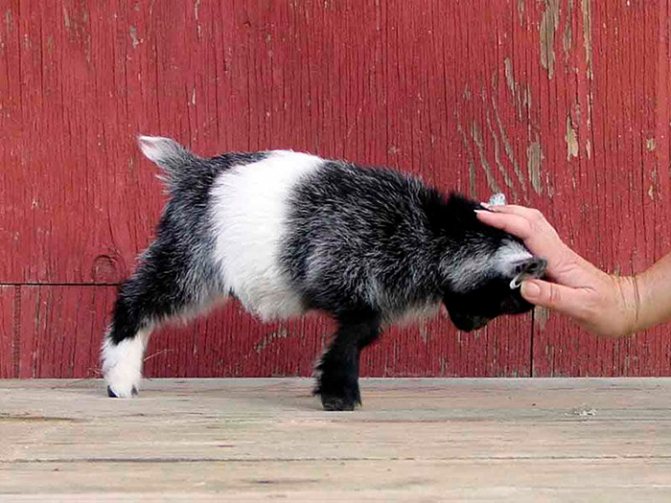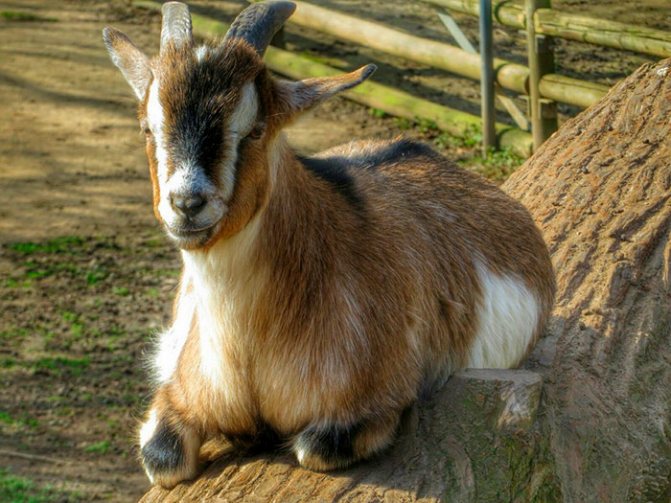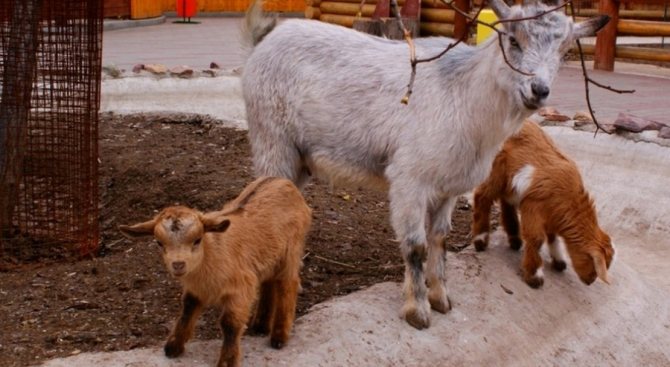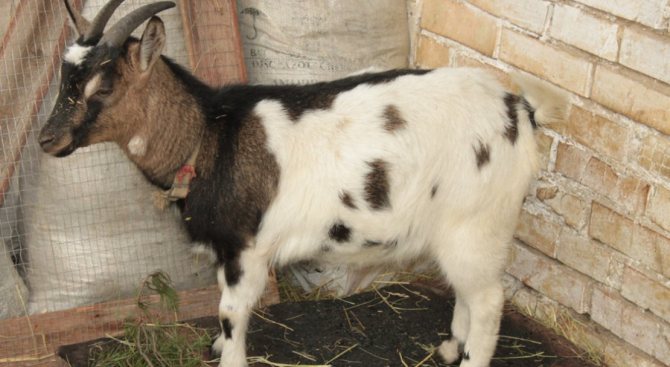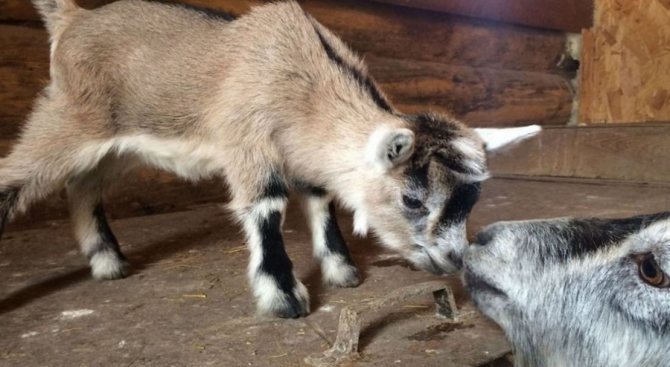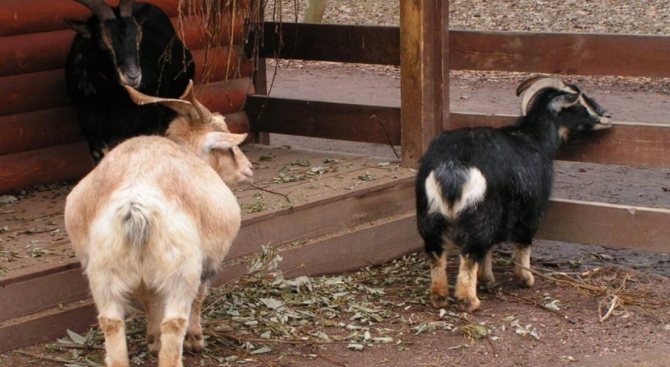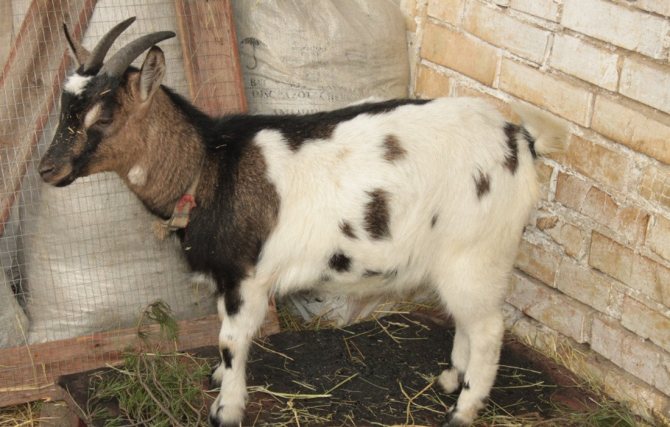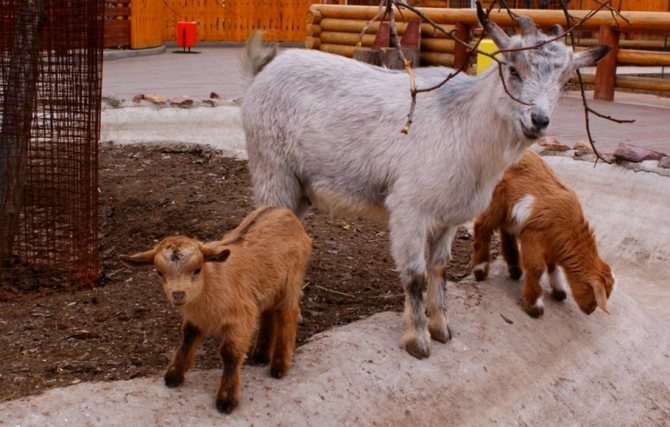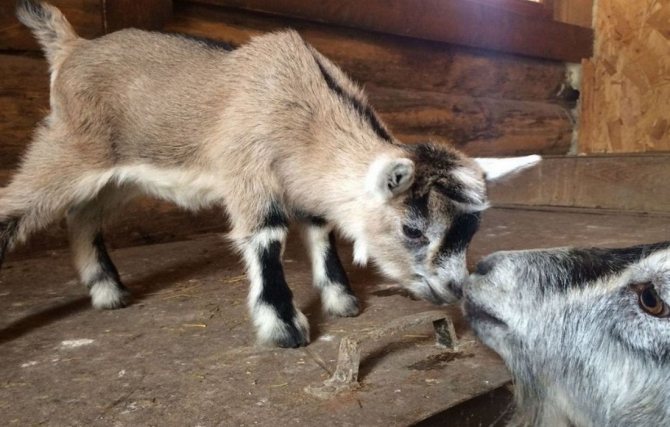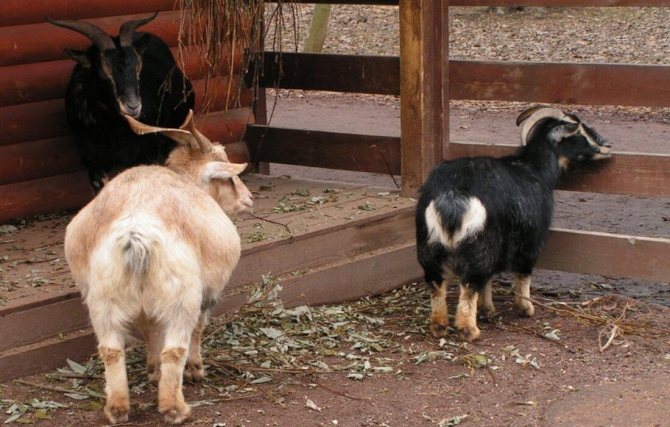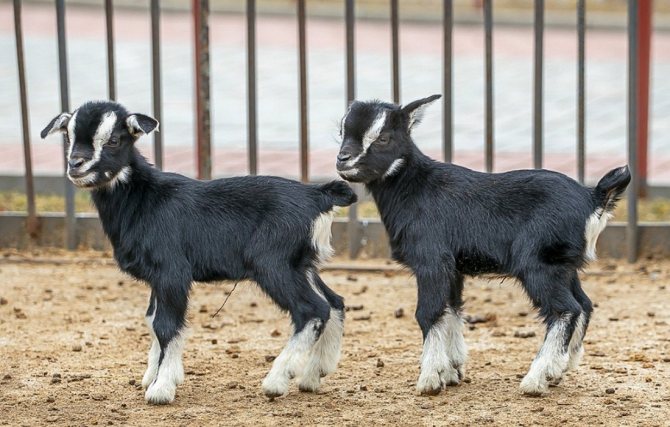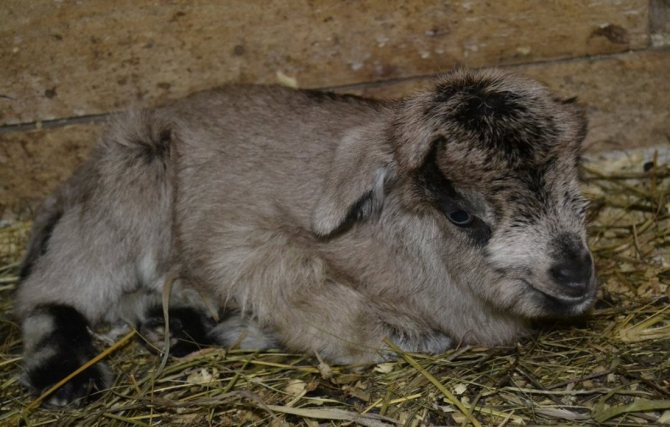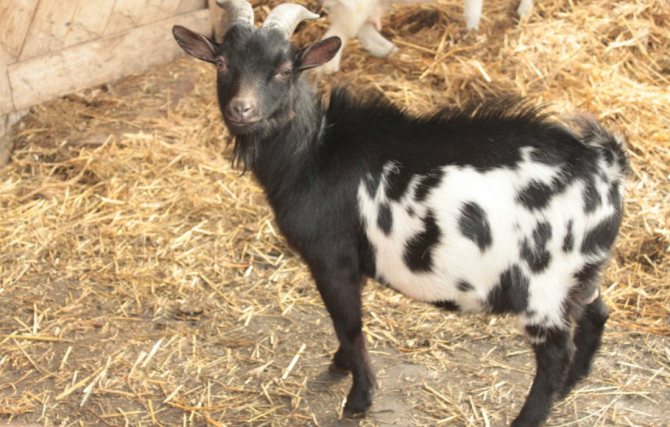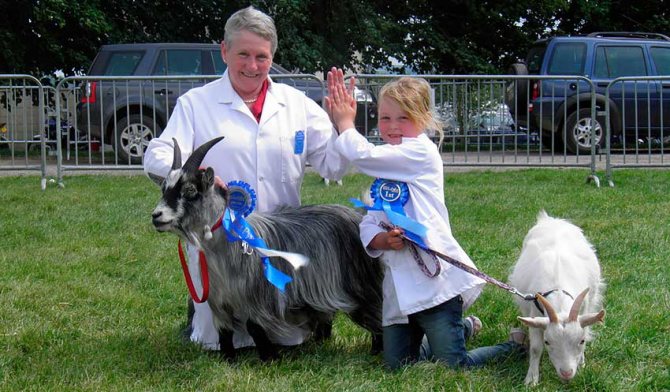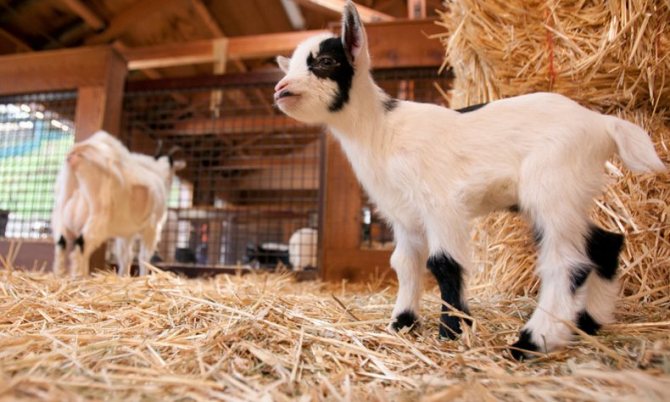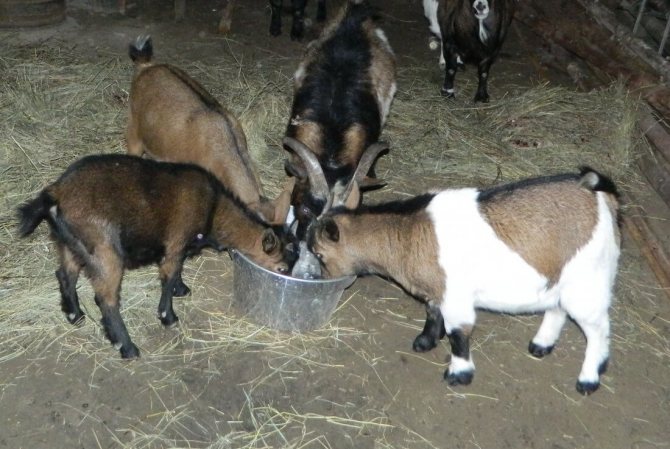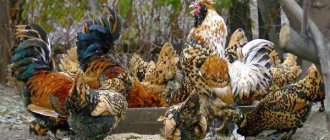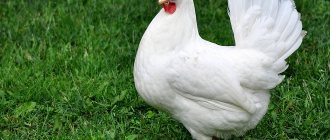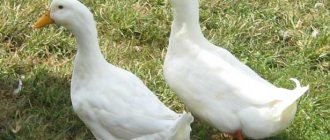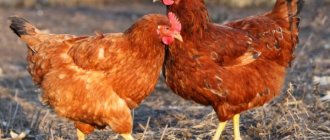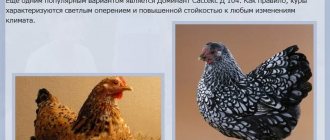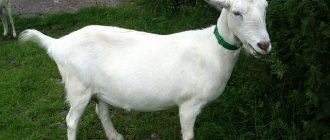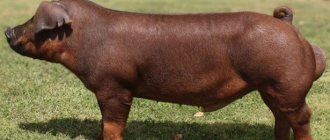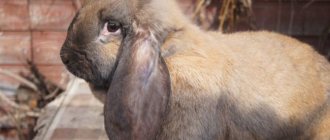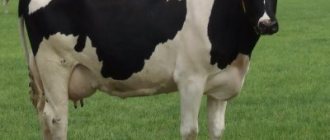Livestock »Goats
1
1260
Article rating
Cameroon goats are gaining more and more popularity in private farming and are bred as livestock on farms and even in apartments. Keeping Cameroon goats in a confined space allows their small size.
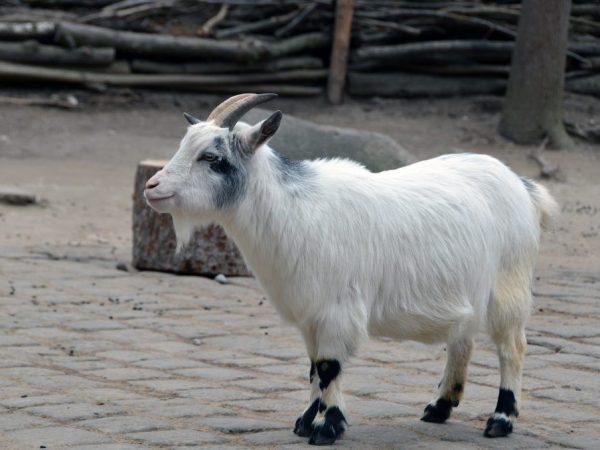
Cameroon goats
History of appearance
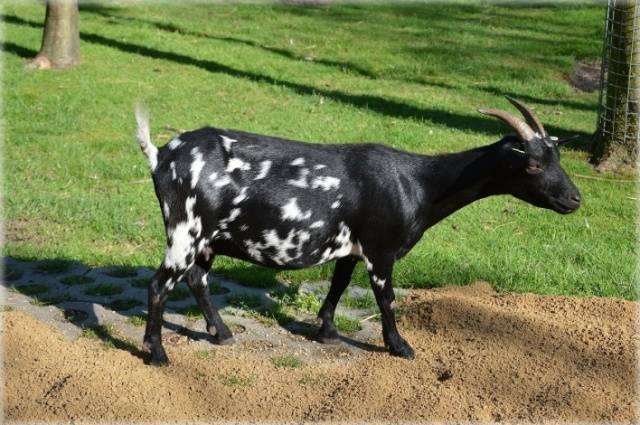

Naturally, illiterate African tribes could not tell the Europeans the history of the origin of mini-goats. Therefore, these breeds got their names from the regions where white people first found them.
The progenitor of both breeds was most likely the West African dwarf goat. This breed is still widespread in Africa today. The Pygmy goat was found in West Africa, the Nigerian (Cameroon) breed of goat was originally found in the Cameroon Valley, although it is common throughout West and Central Africa. And today it is already around the world.
The Cameroon breed has a double name due to the fact that the Cameroon fault runs just along the border of these two countries, and sailors simply bought goats on the coast of the Gulf of Guinea. Who is in Nigeria and who is in Cameroon.
These artiodactyls sailed to Europe as food for predatory animals at a time when Great Britain collected live wonders from overseas colonies for its zoos. The dwarfs were also appreciated by sailors who began to take them with them on ships for the sake of fresh milk and meat. Places of mini-goats took up little, food was also required less, and milk from them could be obtained almost like from large breeds.
Later, Cameroon mini-goats were also appreciated by milk producers. But the Pygmies began to be bred not so much for the sake of meat as as pets. They have a more attractive appearance. If we compare the photo of the Cameroon (Nigerian) goat and the Pygmy goat, then this becomes obvious.
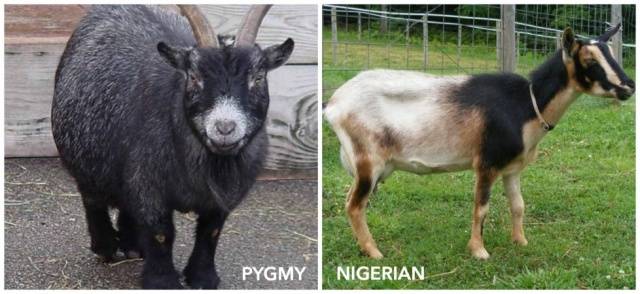

Interesting! Serious battles are going on between amateurs who keep Pygmies as pets and goat producers from the same Pygmies.
Some cannot understand how it is possible to eat such adorable animals, others are perplexed, since when did goats become inviolable. Moreover, not everyone who deals with dwarf breeds, and indeed with goats in general, agrees about adorable animals.
Origin
The breed came to us from Africa. On the "black continent" goats move freely around the area in search of food. When it is not possible to find food on the ground and on the bushes, the goats easily climb the trees and chew the leaves from the tops.
Mini goats are also popular in America. In addition, the USA has bred its own breeds. As farmers note, the creation of a new species is not difficult, and almost always the crossing process brings a positive result.
Such breeds are also widespread in Europe. For example, they can often be found on estates in Germany and Sweden. The "kids" came to Russia in the 90s of the last century. The key areas for their breeding are Moscow, Novosibirsk, Kaliningrad and Yaroslavl regions.
Description
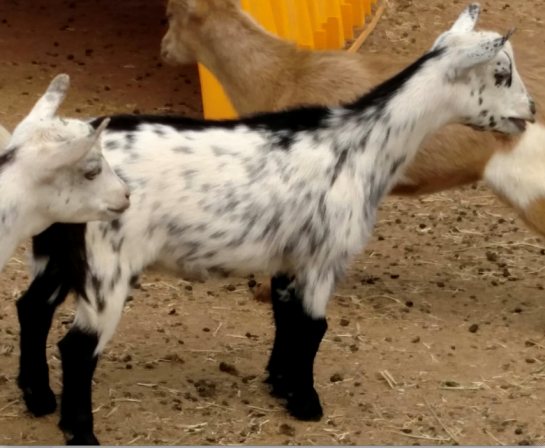

The various colors of Cameroon and their similarity with the Pygmies, as well as the presence of numerous crosses of dwarf breeds and dwarf goats with large ones, led to the fact that the descriptions of the Cameroon goat in different sources are seriously different.Add to this the small number of these animals in Russia and, accordingly, the scarcity of information about them, and your head will go round.
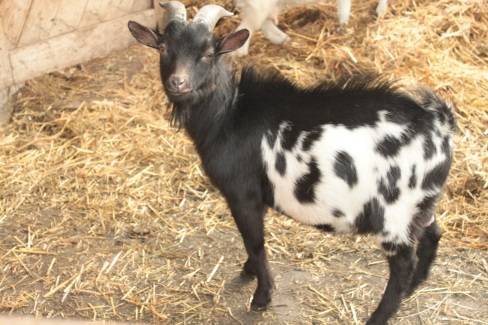

Most of the differences relate to the size of these dwarfs. In Russian-language sources, you can find information that the size of the Cameroon goat does not exceed 50 cm. And this is the size of the goats. Females are even smaller. The weight of a goat is usually 25 kg, very rarely reaching 35 kg. The uterus usually weighs 12-15 kg. In the absence of the Russian Association of Cameroon Goats, it is difficult to say if this information is true.
The description of the Cameroon goat breed, given by the American Goat Society and the American Dairy Goat Association, indicates that the female should be up to 57 cm at the withers, and the male should not be more than 60 cm. According to the standard of another Dwarf Goat Association, males should ideally reach 48-53 cm with the maximum allowed height at the withers of 58 cm. Goats in this association are ideally 43-48 tall with a maximum height at the withers of 53 cm.
The difference in height as much as 10 cm leaves a lot of room for "creativity". It is good if the result of creativity is just a "minis", and not an ordinary mongrel goat that has been chopped up as a result of inbreeding.
On a note! The Cameroonians live 10-15 years.
The Cameroon goat has a small dry head, a thin neck, a relatively wide back and thin legs, which are longer than those of the Pygmy goat, which is characteristic of dairy breeds.
Pygmies differ from Cameroon in shorter legs, thicker neck and more muscle mass. The growth of both breeds is the same. Also, both breeds have horns, but breeders of dairy goats often dehrify animals to avoid injury.
Photo of a Cameroon goat.
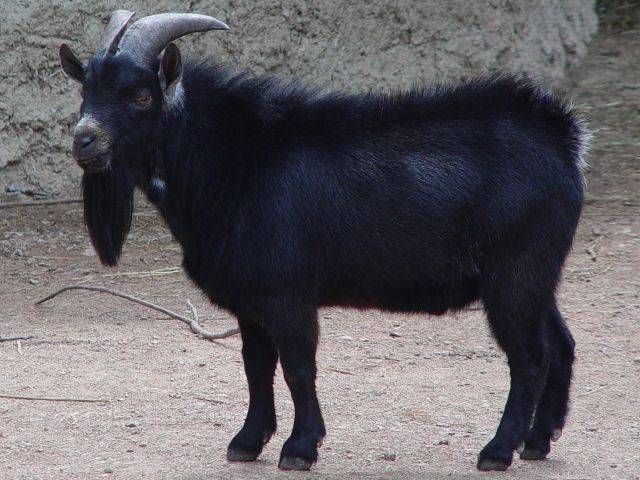

Photo of the Pygmy goat.
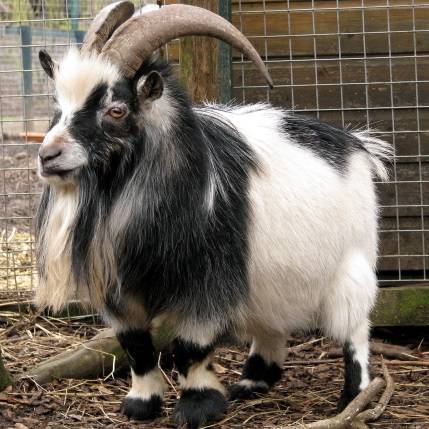

You can see with the naked eye how much the legs of the second are shorter than the legs of the first.
The same situation can be seen in the photo of a Cameroon goat (top) and Pygmey (bottom).
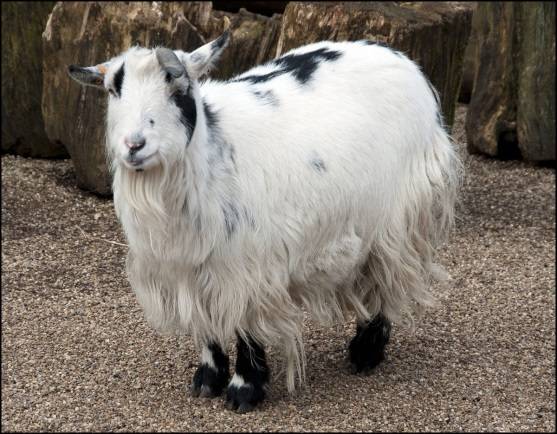

Pygmies are also usually more fluffy, due to which they are more popular with lovers of dwarf goats.
On a note! Dwarfs are not only natives of West and Central Africa.
There are other miniature goat breeds. One of them was bred in Australia specifically as a pet. The productive characteristics of this breed were in second place.
Colors
We'll have to immediately decide which of the African dwarfs we are talking about when buying. Pygmy goats have a very limited number of colors and always have brown eyes. In Cameroon dairy goats, the color variability has practically no boundaries. They can be of any suit. Some Cameroon goats have blue eyes. Therefore, if the goat sold is piebald or spotted, and even with blue eyes, it is almost certainly a Cameroon dairy goat.
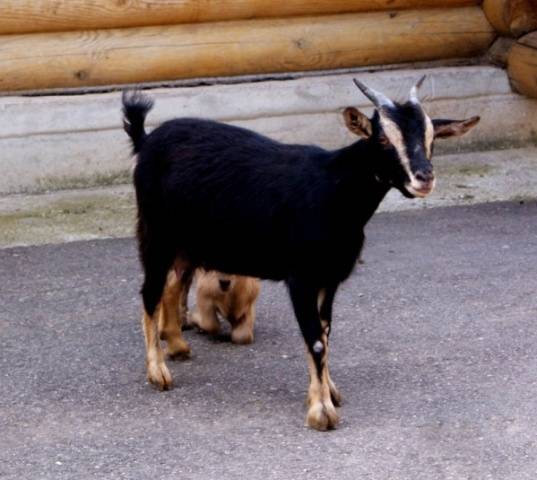

Character
In terms of behavior, dwarf goats are no different from their large counterparts. They are mischievous and stubborn. If Cameroon has got it into her head that she “needs to go there”, she will strive “there” with all her might. The moment will lie in wait when access to the place desired for her is slightly opened and immediately seep.
Contrary to the reviews about the Cameroon dwarf goats, even uncastrated goats do not differ in malice. Their struggle with a person does not come from malice of character, but from the natural desire for any herd animal to find out their place in the hierarchy of the herd. But the touching appearance and small size prevent the owner from catching the moment when the goat begins to try the limits of what is permitted. As a result, the goat comes to the conclusion that he is the leader of the herd, and tries to "put" the owner "in place".
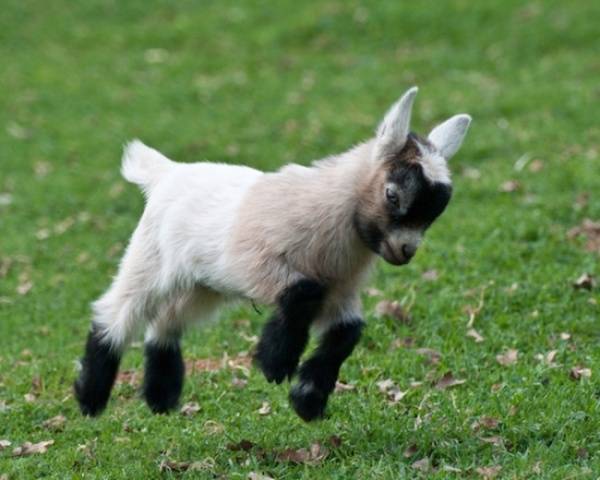

To displace the leader and take his place, you will have to fight the animal in earnest.Hence the opinion about the malevolence of adult goats. One way or another, you still have to fight the goat, and it is better to "catch" his encroachment on leadership at the very beginning. Then you can get by with "little blood".
In general, Cameroonians are very affectionate and affectionate creatures. They very easily get used to the owner, if you do not offend them.
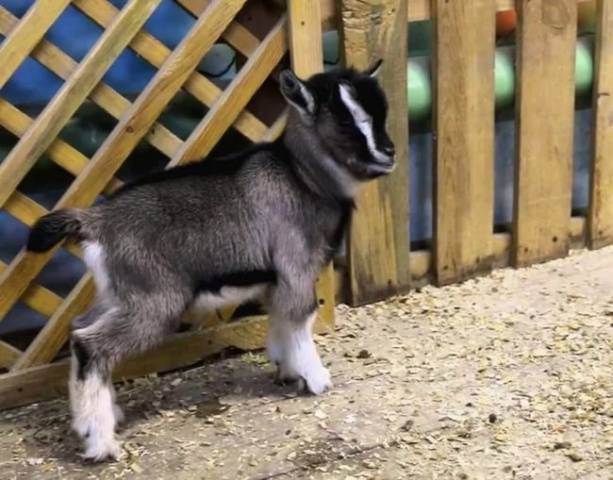

Interesting! Cameroon goats do not like water just like cats.
They can even be punished in the same way as cats: by spraying with water from a spray bottle.
Productive characteristics
If we take the American line of Cameroon dwarf goats, then their productivity is really amazing. At their peak lactation, these goats can produce up to 3.6 liters of milk per day. Although their productivity actually ranges from 0.5 liters to 3.6 liters per day and averages a little more than a liter. How much milk a particular Cameroon goat gives depends on their diet, the milk yield of a particular animal and which line it belongs to. But you should not count on more than 1.5 liters of milk per day.
Cameroon goat milk is highly valued for its high fat content, the average value of which is 6.5%. Sometimes the fat content can rise up to 10%. The milk is odorless and has a creamy taste. In the reviews of foreign owners of Cameroon goats, there are confessions that they "deceived" their friends. The man sincerely believed that he was drinking cow's milk.
Advantages and disadvantages of the breed
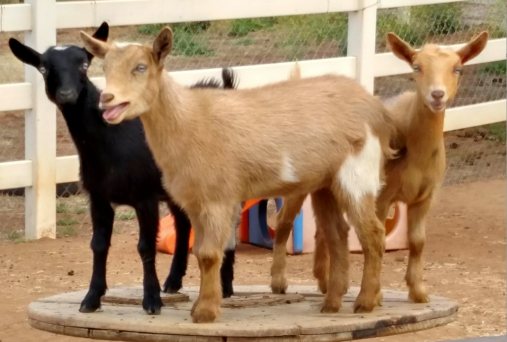

The advantages of the breed are the economy of their maintenance and a fairly large milk yield.
Important! This breed can breed all year round.
Thanks to this feature, 3-4 goats lambing at different times is enough to cover the milk needs of a small family all year round.
A serious advantage is the problem-free lambing of Cameroon goats. Lambing complications are rare in dwarf goats. An adult Cameroon brings 1-2 kids.
The disadvantages include the "stickiness" of the Cameroonians. If the uterus is friendly to a person, then the kid will not be afraid of him. Especially if you communicate with a kid from birth. This option is preferred by the owners of dwarfs who do not want their pets to literally walk over their heads later.
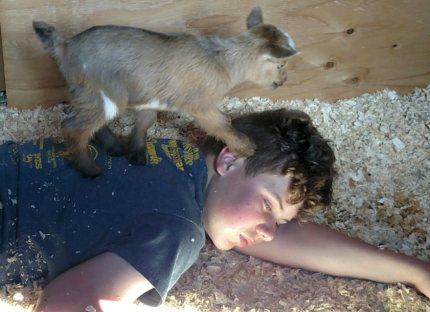

With the custom that is widespread in Russia, immediately after birth, to take the kids from the uterus and feed them by hand, the owner of the Cameroon runs the risk of getting a serious headache. The kid really becomes demanding and annoying. This is understandable from a scientific point of view: imprinting, but it is very inconvenient in everyday life.
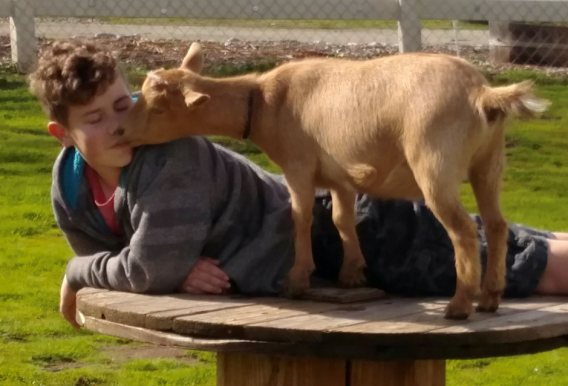

Courtyard model
The difference between this mini breed and others is in the horns. They are much smaller and curved inward. The breed has large protruding ears and a short tail. The height of goats is up to 50 cm, and the body length is up to 70 cm. The maximum weight of animals is 25 kg. The fur is very thick and short. The most common are individuals of a dark color with light blotches.
The milk is very tasty, goats are capable of producing up to 2 liters of milk of 5% fat per day. Milk from these goats has a sufficient amount of nutrients and vitamins.
Content
The needs of dwarf goats differ from the needs of the larger species, except in a smaller way. Life in harsh African conditions has taught these animals to be content with little. They even have to be limited in grain feed so that the goats do not become obese.
If the amateur already had some goats, then the question of how to keep the Cameroon goat will not even arise. Fears that the African animal will not endure the cold well are unfounded. Africa's climate is not nearly as mild as we all used to think. Often, even above zero temperatures with high air humidity and strong winds are felt as below zero.
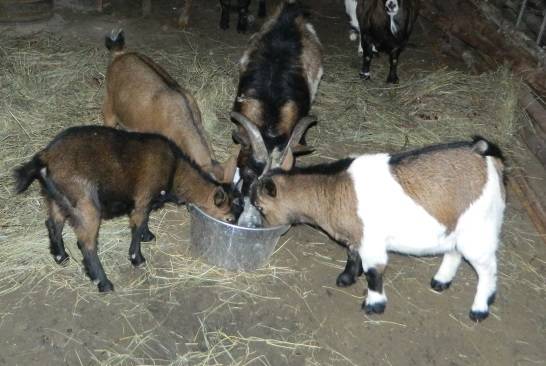

Cameroon goats do not like dampness and need a dry room. In frosts, they will bury themselves in a deep litter.In general, Cameroonians are no more demanding on the climate than Nubian or Saanen goats.
Important! Keeping Cameroon goats in an apartment is undesirable.
Goats are destroyers by nature. They can jump on walls and closets as well as cats. And the same mischievous. But a cat can be trained to do his business in a litter box, and a Cameroon can only be taught not to do his business in a sleeping place. Therefore, even as a pet, the Cameroonian must live in a separate room in the yard.
Features of breeding and caring for dwarf Cameroon goats
Breeding goats, despite their ability to live in all conditions, is recommended on farms or other open areas.
Mandatory for breeding and caring for offspring are:
- bright, dry, absolutely clean and spacious room;
- room temperature in the room in summer and not lower than +17 degrees in winter;
- the presence of an aviary or paddock for walking;
- hay or straw bedding.
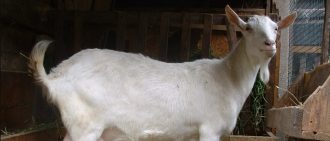

Be sure to read:
Zaanen goat breed: description and characteristics, how to care for and maintain, productivity
In the very process of breeding, there are no difficulties, goats tolerate pregnancy and childbirth well. The kids are recommended to be weaned from their mother immediately on their birthday and fed on their own with colostrum during the first week of their life.
After the first week, babies' daily diet includes 4-5 grams of salt and clean fresh hay. In the third week, regular milk is already given. You need to feed the kids at least 4 times a day.
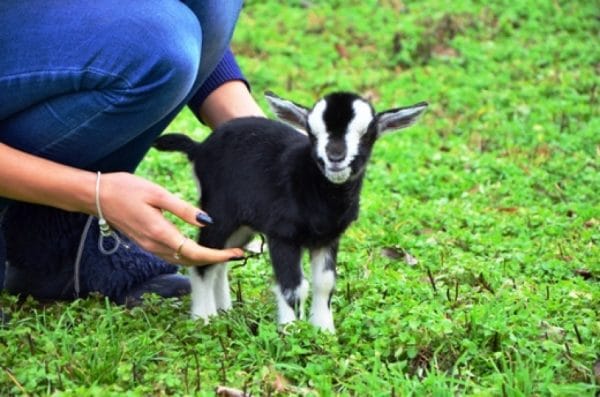

Upon reaching the young age of 1.5 months, it is smoothly transferred to an adult full-fledged diet, excluding milk, adding oats, bran, vegetables and cereals.
Important! The kids need to be given vitamins and crushed chalk on a regular basis to strengthen their bones.
After 2 months of age, all Cameroonians need to carry out prophylaxis against parasites three times a year, as well as trim and treat their hooves once a month.
Choice
To obtain milk, it is better to choose a goat with at least one lamb. In such an animal, the teats are already developed enough to create a minimum of discomfort during milking.
On a note! Cameroonians differ from Pygmies also in the size of their nipples.
Pygmies have very small teats and are not very suitable for milking. Cameroonian nipples and udders are much larger.
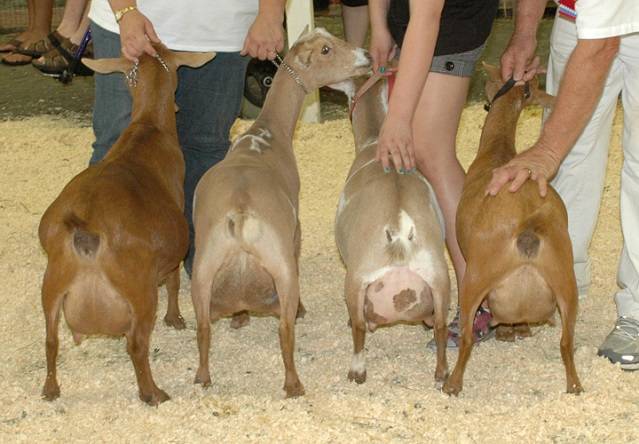

The ways to choose the right Cameroon goat are the same as when choosing large dairy breeds:
- correct exterior;
- udder without blemishes and regular shape;
- milk yield check before purchase;
- no additional nipples.
For Cameroon, having only two main nipples is a very important factor. In a large goat, this issue can be neglected, but since the Cameroon goat has to be milked literally with three fingers, extra nipples will interfere very much.
Young Cameroonians are milked with the thumb, forefinger and middle finger. After the second lambing, the queens can already be milked with a fist, but in this case the index finger is excluded from the process.
The video shows that Cameroon has rather large nipples. But about "tame from childhood" - a marketing ploy.
Important! It is better not to eat milk for the first 2 weeks, giving it to the kid.
If the kid is left under the uterus, at first the leftovers will have to be removed. In this, for the first 2 weeks, the uterus produces colostrum, even when it is no longer indistinguishable from milk in color. But it tastes like nothing. After 2 weeks, the milk becomes sweet.
The main requirements for feeding Cameroon
The most important component of the animal feeding scheme is iodine. The goat should receive 0.15-0.8 mg per 1 kg of food per day. It is good to feed goats with oat or barley straw as a humane feed. Hay should have a maximum moisture content of 17 percent.
Before use, the straw is cut into 3 cm pieces and soaked in warm water. Salt is added to the water - 5 g per 10 liters of water. Fallen leaves and brooms are considered a valuable supplement for feeding.Phosphorus is a vital element for kids. There must be lick salt in the trough.
The immense popularity of Cameroon goats among farmers was created due to their cute appearance, friendliness, resistance to many diseases and high productivity. When asked whether it is difficult to care for a goat, the answer is unequivocal - no. The main thing is to follow the recommendations of specialists for keeping and feeding.
Cameroon goats - on video:
Testimonials
Galina Lushchik, Vsevolozhsk
I really liked the description of the Cameroonian goat breed, and in the photo they are generally cute. I searched for a long time, found only in Lugansk. They brought me a couple of kids. Well, yeah, cuties. While they sleep. As soon as they wake up, they begin to spread everything around. Not out of malice, of course, they just play. But cats already run away at the first sign that the kids are awake. The rooster lost ground. So far, only geese are afraid. But the kids are still small, the horns have not really grown back, although they are already trying to use it.
Alexander Sokolov, p. Dulyapino
I took Cameroonians, since I have little space in the barn, and my wife tortured me that the child needed goat's milk. So I decided that if at least a glass a day will be obtained, then it will be enough for us. 2 goats have been living for the fourth year already. Milk turns out to be more than a glass, frankly. Now we ourselves have to eat porridge in milk almost every day.
Advantages and disadvantages of Cameroon goats
The dwarf Cameroonian breed, despite its long-standing fame, continues to be popular with farmers and animal lovers.
Among the advantages of the breed:
- high immunity and good health;
- resistance to changing climatic conditions;
- compactness and diminutiveness;
- high fertility rate;
- ease of care and feeding;
- unpretentiousness;
- docile and friendly character;
- compliance with training;
- minimum maintenance costs.
Among the small number of disadvantages of Cameroonians, only:
- poor tolerance of loneliness;
- tendency to outbursts of aggression under the influence of a stressful state;
- inability to humid air.
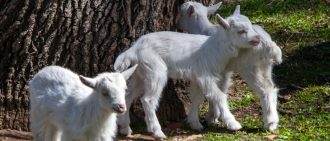

Be sure to read:
Diarrhea in kids and adult goats: causes and treatment at home



